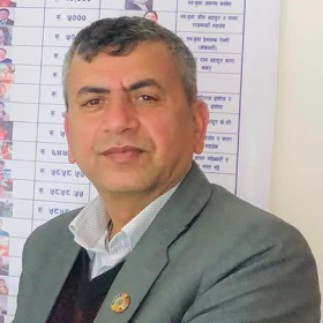Opinion
Scaling up nutrition
All sectors need to jump in to address gaps that hamper the provision of proper nutrition to Nepali children
Jhabindra Bhandari
Globally, malnutrition is a huge problem, with at least one in three people experiencing malnutrition in some form or the other. Progress has been made to improve nutrition over the past few decades, however, the burden of malnutrition still remains a significant challenge in many developing countries. While low- and middle-income countries are now witnessing a rise in childhood overweight and obesity, poor nutrition continues to cause nearly half of the deaths in children under five years of age.
Nepal has been striving to improve the health and nutritional status of children via a multi-sector approach. Approximately 36 percent the children suffer from stunting, 10 percent from wasting and almost 53 percent from anaemia. The ambitious target is to reduce the rate of stunting from 36 percent to 24 percent by the year 2025 and to 14 percent by 2030.
The consequences of acute malnutrition are profound, irreversible and lifelong. Therefore, good nutrition and care during the first 1000 days of a child’s life is essential for a child to grow, learn and rise out of poverty. Understanding this ground reality, the National Planning Commission (NPC) in coordination with the European Union (EU) and the United Nations Children Fund (UNICEF) launched the first ever Golden 1000 Days campaign in April last year to raise public awareness to improve the nutritional status of women and children across the country.
Nepal has also been implementing the Multi-Sector Nutrition Plan (MSNP) targeting women, children and adolescent girls. The second phase of the MSNP (2018-2022) has recently been launched, which primarily aims to increase the service coverage by scaling up nutrition specific as well as nutrition sensitive interventions.
There is an emerging need to raise the awareness of federal, provincial and local level governments to achieve the targets and objectives of the MSNP via a participatory and inclusive approach. The role of development partners would be crucial to provide technical assistance to government institutions for effective implementation of plan and programmes.
Broadly, a multi-sectorial approach for nutrition seeks to improve the efficiency and effectiveness of the government’s investments in food security and nutrition. Enhanced nutrition education and nutrition promotion of safe and nutrient-rich food and dietary diversity will significantly contribute to achieving attitudinal and behavioural changes.
Growing better food
In addition, nutrition-sensitive agriculture is a food-based approach to agricultural development that puts nutritionally rich foods, dietary diversity, and food fortification at the heart of overcoming malnutrition and micronutrient deficiencies. This approach will eventually help equip the global food system to produce good nutritional outcomes.
Over the years, there has been landmark progress in terms of strong political will and commitment of government and partners to effectively address the growing challenges of malnutrition in most of the remote districts where poverty, illiteracy and limited access to health care are still challenges for sustainable development. Scaling Up Nutrition (SUN) began in 2009 as a global movement that largely seeks political interest in nutrition among leaders of governments and development partners. This is a global push for action and investment to improve maternal and child nutrition.
While there is a high level multi-sector nutrition and food security coordination committee at the NPC to ensure engagement and partnership, the capacity of the National Nutrition and Food Security Secretariat should be enhanced to facilitate multi-stakeholder coordination and networking for planning, implementation, monitoring and evaluation of the MSNP in a participatory and gender-sensitive approach. More importantly, participatory planning and implementation for nutrition specific and nutrition sensitive interventions should be the prioritised at all levels. Although political commitment for MSNP II is gaining momentum, the most challenging task for the government and partners is to ensure its effective implementation and track the results.
Therefore, the capacity gaps of multi-sector nutrition and food security coordination committees should be realistically addressed as early as possible. There should be a robust monitoring and evaluation system to ensure a periodic review, and assessments to measure progress.
Coordination is key
Undoubtedly, relevant sectors such as education, agriculture and livestock, water and sanitation, food security, local development, public health, women and children can play a role in improving the nutritional status of children who are poor, socially disadvantaged and living in remote communities.
Thus, health sector response alone would not be sufficient to effectively address the growing challenges of hunger and malnutrition in most remote districts. There is a window of opportunity to engage civil society, private sector, academia and research institutions in policy advocacy, capacity building and networking with a range of local stakeholders for implementation of scaling up nutrition initiatives.
To sum up, Nepal’s efforts in scaling up nutrition initiatives have been appreciated over the years. However, more resources are still needed for the effective implementation of both nutrition specific and nutrition sensitive interventions as envisioned in the MSNP.
Bhandari is a PhD candidate at Chulalongkorn University, Thailand




 18.12°C Kathmandu
18.12°C Kathmandu










